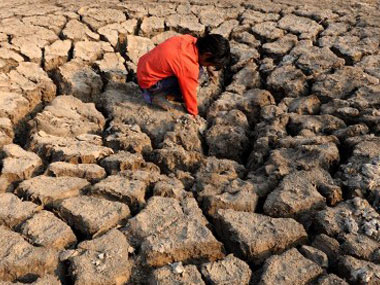Maharashtra’s horrendous drought situation is perhaps the best opportunity for the state’s cricket associations (MHA, VCA & MCA) and the BCCI, which are caught in the eye of the storm, to come up with long term solutions to the crisis.
Nevermind that the Indian Premier League (IPL) is just another industry which generates crores of rupees in tax, provides thousands of jobs and gives a fillip to the economy. The prevailing intensity of the rage against IPL on social media and elsewhere, regarding wanton wastage of water in these times of drought is such that questions are being asked of the social and moral responsibility of the BCCI in conducting the event at a time like this.
Without getting into a debate on the issue, it needs to be pointed out that it was indeed the BCCI which chose to have the IPL in the summer months, when most of the country could be expected to be short of water.
Now, it should also learn some lessons on water management from its affiliated unit, the Karnataka State Cricket Association (KSCA) or the few socially conscious golf courses operating in the country.
“We’ve tapped the Queen’s Road sewage line (running along the Western side of KSCA) and have set up our own Sewage Treatment Plant (STP). We started work on this concept a while ago and it is now ready. Currently, we are running tests on the purity and quality of the water. We will generate 2,10,000 litres of water every day, which is easily sufficient for both our grounds,” said Brijesh Patel, KSCA secretary.
Pointing out that KSCA spent less that Rs 1 crore in setting up the STP, Patel said that the rainwater harvesting system that they had put in place earlier was also recharging ground water during the monsoon months.
“We will continue with both systems because we believe that cricket is the number one sport with a huge following. But we also have a responsibility to put good social initiatives into practice to benefit the community. Already, our solar energy initiative produces six lakh units of electricity a year. The 410 KW of electricity is enough to power 300 homes. When we finish covering the western-side roof with solar panels, we should be able to generate 1.3 megawatts per year,” he said.
Nandan Heblikar, India’s leading golf course and sports turf consultant was confident that if cricket associations showed the willingness, they could build STPs in Nagpur and Mumbai, and at under Rs 1 crore apiece.
“They need to set aside an area of just 3,000 square feet. They have to tap into sewage lines running close by and, if they work on it with urgency, they can have it up and running in just 10 days,” he said. “There are many golf courses in the country which now have STPs for their water requirement and there is no reason why cricket stadia too cannot follow the example.”
Heblikar, a former state cricketer himself, has done extensive research on turf management and has overseen work of numerous cricket, football and golf courses in India.
He pointed out the logistics that went into watering of a major cricket ground like the Wankhede or the VCA. “A cricket ground stretches over 19,000 square metres. Depending on the choice of grass, clay content in soil, humidity levels and the time of the year, you’d need 5-7 litres of water per square metre. In a populous area like Mumbai, the Wankhede can easily generate one million litres of water a day. STP water is not fit for human consumption. But it can be used to water the cricket ground and, more importantly, to recharge ground water,” he said.
Certainly BCCI would do well to take a leaf out of KSCA’s book. The association not only has an STP for its water requirements, its solar power capacity currently saves it more than Rs 45 lakh a year by way of power bill. “This amount will go up substantially once we get the Western stands solar roofing ready,” said Patel, adding that they saved 2,000 tons of carbon emission through their initiatives. “Our kitchen waste plant generates enough gas to run our ancillary kitchen,” he said.
Hopefully, the jolt from the courts will get BCCI and all their affiliated units to seriously look at KSCA’s initiatives and emulate them. There is no doubt that every city in India could do with a lot more power, water, gas and along the way, even solve some of the sewage issues with these initiatives.


)




)
)
)
)
)
)
)
)